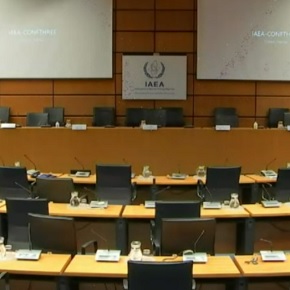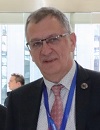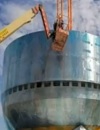Spent Fuel
IFRES - the future of Chinese fast program
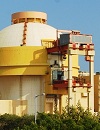 Kudankulam: AFR controversy continues
Kudankulam: AFR controversy continues
The conflict over the proposed dry storage facilities for spent nuclear fuel from the Kudankulam nuclear power plant (India) has reached a new level.
The local authorities, who oppose the storage facilities, are calling for the central government to join the discussion and either return the spent nuclear fuel to Russia or place it in a permanent geological storage facility, which, by the way, is not available in India.
Recall that in 1998, when signing an agreement with Russia on the construction of the Kudankulam nuclear power plant, the Indian side insisted that the spent nuclear fuel would remain in India for processing.
Prior to being sent for reprocessing, the plant irradiated fuel is stored in spent fuel pools, from where it is planned...
Nuclear News Ticker - May 02, 2021
Nuclear News Ticker - December 23, 2020
Nuclear News Ticker - December 16, 2020
Nuclear News Ticker - December 01, 2020
Nuclear News Ticker - November 07, 2020
Dallas company intends to apply for the licensing of the first in the U.S. interim centralized storage of spent fuel
NRC completed the publication of SER volumes SER for Yucca Mountain
NRC published the fourth SER volume for Yucca Mountain
South Korea Running Out of Storage Facilities for Nuclear Waste
Norway Signs Deal on Nuclear Waste Disposal System in Northern Russia
EU approves new nuclear waste storage regulations
Japan has no plans to dump spent nuclear fuel abroad - state secretary for foreign affairs
China says mastered nuclear fuel reprocessing
Serbia ships 2.5 tons of nuclear waste to Russia
Ukraine expects new nuclear waste export deal with Russia this week
Belarus to return some spent nuclear fuel to Russia
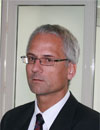 Joachim Knebel: safety is always one of most important issues
Joachim Knebel: safety is always one of most important issues
I think it is very important conference in the field of the liquid metal technology. It gives very well overview on what is done worldwide in this field, especially in Russia, which is the leading nation in the liquid metal technology (lead and lead-bismuth).
In the conference we see the presentations on all research works in Russia, starting 50 years ago. Initially, it was the submarine application and now it is starting to be the civilian application. It is done in parallel to the light-water reactors and sodium reactors just in order to find the solutions for the energy problems.
This conference gives the very good overview of the work in Russia. Of course, I would like to stress we can see also the works done in international collaboration with Europe, Japan and USA.
I am coordinator of the biggest EURATOM project, which deals with the transmutation of the high-level waste. We are studying the heavy-liquid metal cooled subcritical accelerator-driven system.
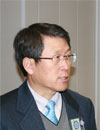 Professor Il Soon Hwang: heavy metal coolant has great advantages
Professor Il Soon Hwang: heavy metal coolant has great advantages
In order to accept this kind of situation in Korea, our university is pursuing the technical solutions to transmute the spent nuclear fuel. We expect that we can eliminate the long-living radioactive isotopes. Eventually we hope to turn all the spent nuclear fuel into low or medium level nuclear waste.
That means we can continue our nuclear power program with the public acceptance. One can say that the transmutation technology could help us to win this public acceptance. This technology is not only environmental friendly but also safe and proliferation resistant.
We see that the heavy metal coolant technology has the great advantages over any other existing technological option for the transmutation applications because of its chemical inertness, high boiling point and good capability for natural circulation.
Therefore, we are going to take the advantage of this Russian innovation in nuclear coolant to develop the safe and proliferation-resistant transmutation technology.
 Conflict of nuclear initiatives
Conflict of nuclear initiatives
If the GNEP principles concern the technologies of fast reactors and closed fuel cycle, what does Joseph Adda, the Minister of Power Engineering of Ghana have to do with it being one of the GNEP signers? What is the purpose of persuading the delegations from Cameron, Tanzania and Tunis in the IAEA headquarters? How to explain the intention to involve Georgia into the GNEP if not by a desire to do Moscow an ill turn?
Will the situation be such that the respectable African states will demand their share of fast reactor technologies in the future? Washington doesn't think so. Thus, the discriminating principle of the GNEP is confirmed, the principle that states the old American dream: to create a certain superstructure that will duplicate and actually replace the IAEA and NPT, naturally on the basis suitable for the USA.
Latvia approves draft deal with Russia on spent nuclear fuel
Russia has no plans to import spent nuclear fuel
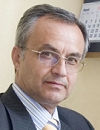 Vladimir Kagramanian: Breeding Ratio Should Be Cheap
Vladimir Kagramanian: Breeding Ratio Should Be Cheap
There is a simple logic here. There are two competitive processes in fast reactor - burning of plutonium loaded and accumulation of new plutonium from 238U. If fraction of loaded plutonium is 20%, its burning is compensated due to accumulation, and energy is generated due to using natural 238U, the reserves of which are "unlimited". But if the content of plutonium is higher than the above-indicated border - 40-50% and more, the rate of plutonium destruction will exceed the rate of its accumulation from uranium. This reactor will become the reactor - burner of plutonium technologically bred, the reserves of which are small, in several times less than the reserves of natural 235U. It means that reactor itself, coolant, the core and other components will be the same both in reactor-breeder and in reactor-burner, but the relationship between physics processes will be different. The tasks, which these reactors will solve, also will be different. Naturally, economy and safety of these reactors will be also different. For example, reactor-burner will have more complicated fuel cycle, and it will be necessary to compensate a drastic drop in reactivity during fuel cycle in this reactor coreЕ
Vladimir Poplavsky: Both lead-bismuth and sodium will occupy its niches in future nuclear power
Up to now fast reactors with sodium coolant have been developed in Russia and in the world. This direction is developed sufficiently. So, BN-600 reactor demonstrates positive and reliable operation during 27 years. We believe that at present the technology of fast sodium cooled reactors is substantiated from the viewpoint of both serviceability and safety. Today the point is to improve its economic indices so that this system would be competitive not only "inside" nuclear power, but in comparison with other power sources. Today there is a task to develop NPP project with large power fast sodium cooled reactor, which should be both safe and economy. If to say about technology of heavy coolants, as it is known, there is certain experience of using lead-bismuth eutectic in reactor for atomic submarine. But if we are going to say about development of this technology for its use at stationary power plant, we have to take into account many of its features. In order to demonstrate serviceability of reactors with heavy liquid metal coolant, joint project between IPPE, OKBM and GIDROPRESS is under development - SVBR-75/100 reactor.
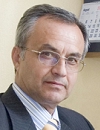 Vladimir Kagramanian: I Feel Pity for the French
Vladimir Kagramanian: I Feel Pity for the French
I feel pity for the French, fallen into real a trap.
Fast reactor technologies and technologies of SNF reprocessing developed in France. The plant for chemical reprocessing of SNF of thermal reactors and fast reactor SuperPhenix were built. Construction of the new NPP with fast reactors for utilization of plutonium extracted from SNF of thermal reactors was scheduled. Everything went in this direction, but in 80-ies the needs in electricity in Europe began stabilizing due to increasing efficiency of electricity consumption. So the necessity of increasing capacity fell away. As a result, the French faced with the problem what to do with extracted plutonium?
A similar accumulation of extracted plutonium was acknowledged as inexpedient both in the UK and USSR (at RT-2 plant). Then the following idea had been arisen - in order to keep people and technologies, MOX-fuel can be started to use in existing light water reactors, and moreover, the adjacent Belgium has demonstrated this technology.
Utilization of radioactive waste will be simplified
Work on foundation of Ukrainian spent nuclear fuel storage (HOYaT) is ahead of schedule
MAYAK general director Vitaly Sadovnikov went into retirement
New technology of radioactive waste reprocessing
Uralchimmash sent a special wagon with container for irradiated nuclear fuel for tests
British firm set to upgrade Russian nuclear storage facility
TVEL completes restoration at Hungarian NPP

